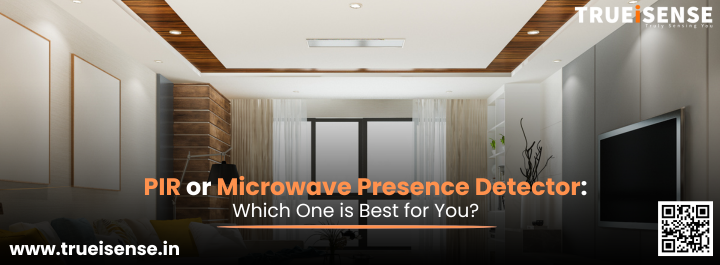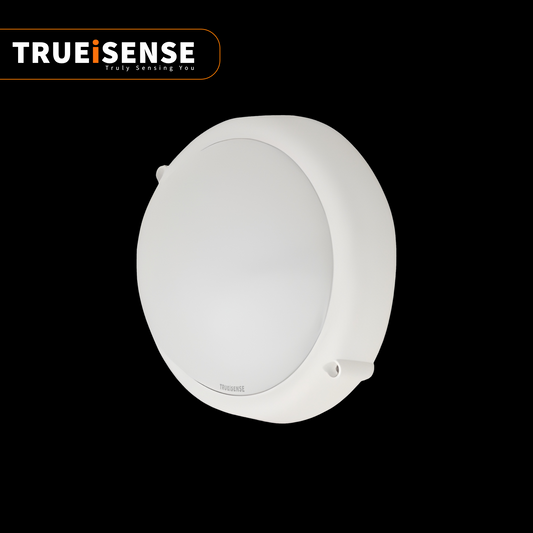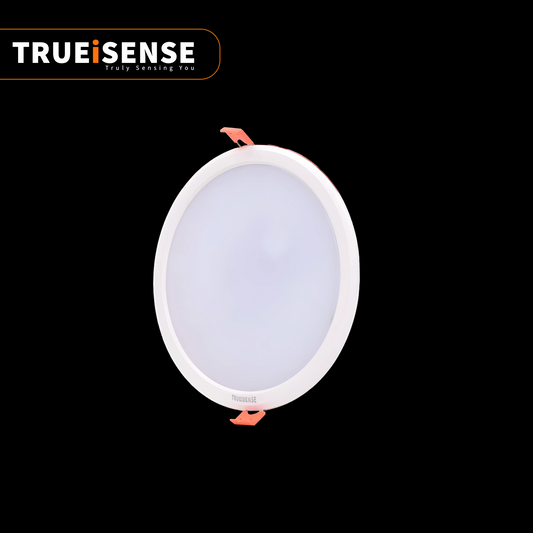
PIR or Microwave Presence Detector: Which One is Best for You?
Introduction
In a world increasingly conscious of energy waste and its impact on the planet, smart lighting control systems have become essential. Lighting typically accounts for a substantial portion of electricity bills, and needless lighting only exacerbates carbon emissions. At TRUEiSENSE, we specialise in intelligent presence sensors and sensor lighting solutions using PIR and microwave technologies, helping you reduce both your energy costs and environmental footprint. By detecting human presence and switching lights off when areas are unoccupied, our systems deliver efficiency, convenience, and sustainability. But which technology—PIR or microwave presence detectors—is best for your space? Let’s explore.

1. Why Presence Detection Matters
Cutting Energy Costs
Unattended lights waste electricity—and money. Presence detectors turn lights off automatically when rooms are empty, often achieving 30–70 % reductions in lighting energy use.
Reducing Carbon Emissions
Every kilowatt-hour saved means fewer carbon emissions. Smart lighting supports global sustainability goals and resonates with eco-conscious businesses and homeowners.
Enhancing Comfort & Security
Aside from energy savings, smart sensors improve user experience—lights are always available when you need them and shut off automatically when you don’t.

How PIR Sensors Work
PIR (Passive InfraRed) sensors detect the infrared radiation emitted by a person’s body. When someone enters the detection zone, the sensor picks up the IR signature and triggers the lighting. When no movement is sensed after a set time delay, the lights switch off automatically.
-
Best for: Clear, enclosed spaces like offices, corridors, or store rooms
Pros:
-
Energy-efficient and low power draw
-
Affordable and easy to install
-
Reliable for marked pathways and defined zones
Cons:
-
Requires line-of-sight—can miss small movements
-
Less sensitive to stationary occupants
- Can be thrown off by pets, heat vents, or temperature shifts
How Microwave Sensors Work
Microwave detectors actively send out low-power radio waves and detect frequency changes when those waves reflect off a moving object. Movement disturbs the waves, so the sensor triggers lighting.
Best for: Open-plan environments, glass partitions, bathrooms, and larger spaces
Pros:
-
Penetrates obstacles like thin walls/glass
-
Detects subtle movement, even breathing-level shifts
-
Often covers larger distances
Cons:
-
Slightly more expensive
-
Sensitive to vibrations or external interference
-
Requires professional calibration to avoid “seeing” beyond intended zones
PIR vs Microwave Presence Detector
|
Feature |
PIR Detector |
Microwave Detector |
|
Detection Type |
Passive infrared (heat) |
Active radio-wave (microwaves) |
|
Suitable Environments |
Enclosed, defined spaces |
Open-plan, glass-walled, high-ceiling zones |
|
Coverage Range |
Medium (5–10 m), depends on height |
Long (10–15 m) and wider detection angle |
|
False Trigger |
Pets, heat sources, and temperature changes |
Airflow, vibrations, and movement beyond the zone |
|
Cost |
Budget-friendly |
Higher upfront cost due to active sensing tech |
|
Ease of Setup |
Plug-and-play |
Requires proper calibration and tuning |
|
Energy Efficiency |
Very efficient in well-defined zones |
Efficient, but may need sensitivity fine-tuning |
|
Maintenance |
Low |
Moderate (tuning adjustments) |

TRUEiSENSE Sensor Lighting: Best of Both Worlds
At TRUEiSENSE, our sensor systems are tailored to your environment. Here’s how we apply both technologies effectively:
-
Standalone PIR for small rooms, offices, toilets, and storerooms
-
Microwave sensors for open areas, double-height foyers, glazed partitions
-
Hybrid solutions combining both technologies for robust multi-zone detection
-
Scalable lighting control that integrates with smart systems—daylight harvesting, dimming, scheduling
✅ Real-World Cases
-
Corporate offices: PIR in cubicles, microwave in corridors and meeting spaces
-
Educational campuses: Microwave for open halls, PIR in classrooms
- Warehouses: Industrial microwave for large areas; PIR in narrow aisles

Which One Should You Choose?
-
Go with PIR if you need a simple, cost-effective solution for small to medium spaces where accuracy and energy efficiency matter most.
-
Choose Microwave if you require high sensitivity, broader coverage, and detection through obstructions in larger or more complex environments.
In some cases, a combination of both technologies—known as Dual-Technology Sensors—can provide the best balance between sensitivity and reliability.
TRUEiSENSE Can Help You Save
With TRUEiSENSE:
-
Reduce electricity bills
-
Shorten return-on-investment cycles through precise detection
-
Contribute to sustainability targets by lowering emissions
-
Enhance occupant comfort and safety
-
Benefit from professional support—from site survey to post-installation tuning
Explore our solutions and case studies at trueisense.in to see how we’ve helped others slash energy use and boost efficiency.

Conclusion
Choosing between PIR and microwave presence detectors depends on your space, traffic patterns, and desired sensitivity.
-
Go with PIR in enclosed, clearly defined rooms.
-
Choose a microwave for open, glass-heavy, or high-ceilinged environments.
-
Combine both for full coverage and reliability.

At TRUEiSENSE, we design and deploy tailored sensor lighting solutions to help you reduce energy waste, lower carbon emissions, and boost occupant convenience. Ready to smarten up your lighting—and your sustainability impact?



